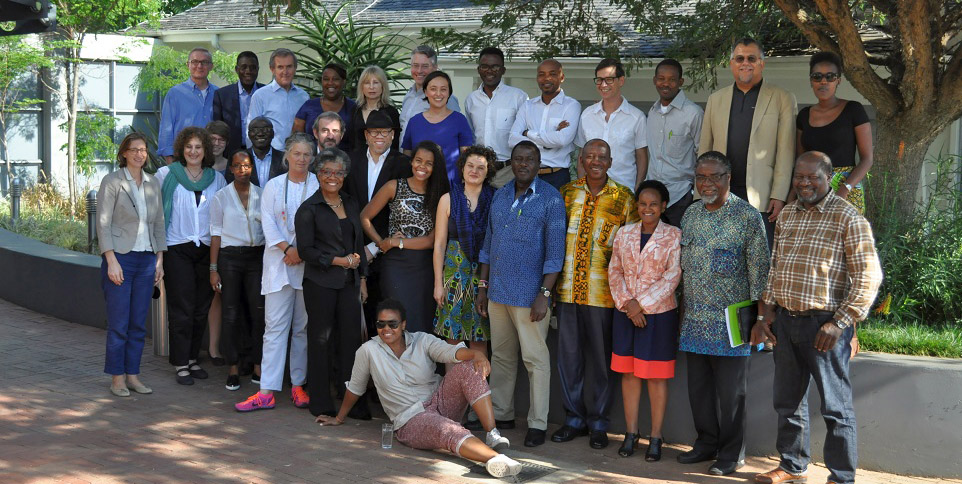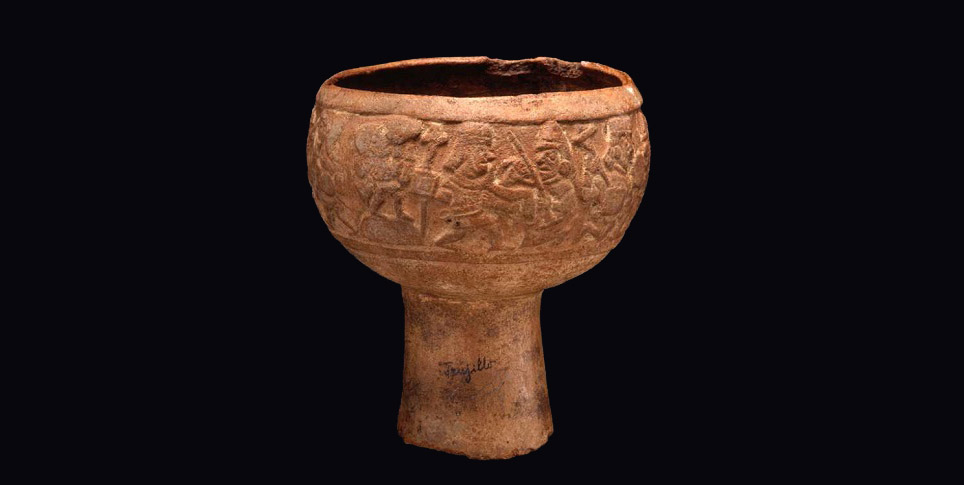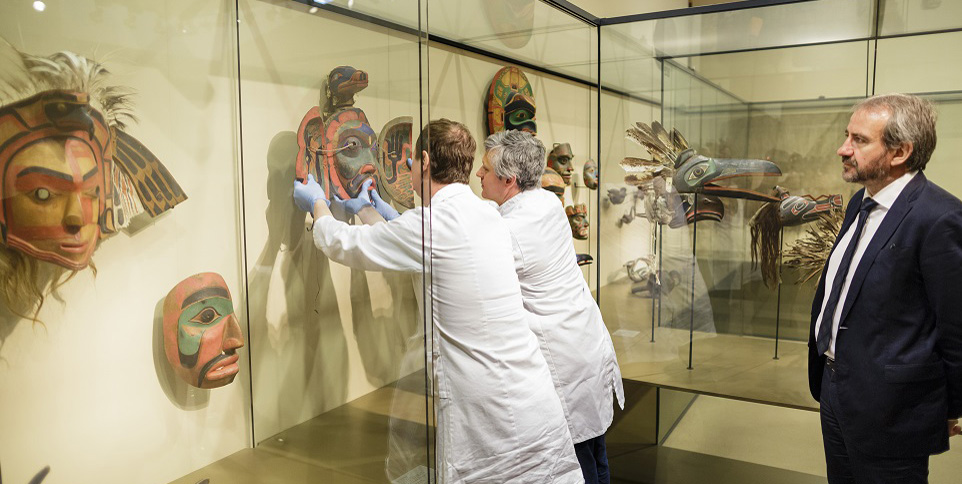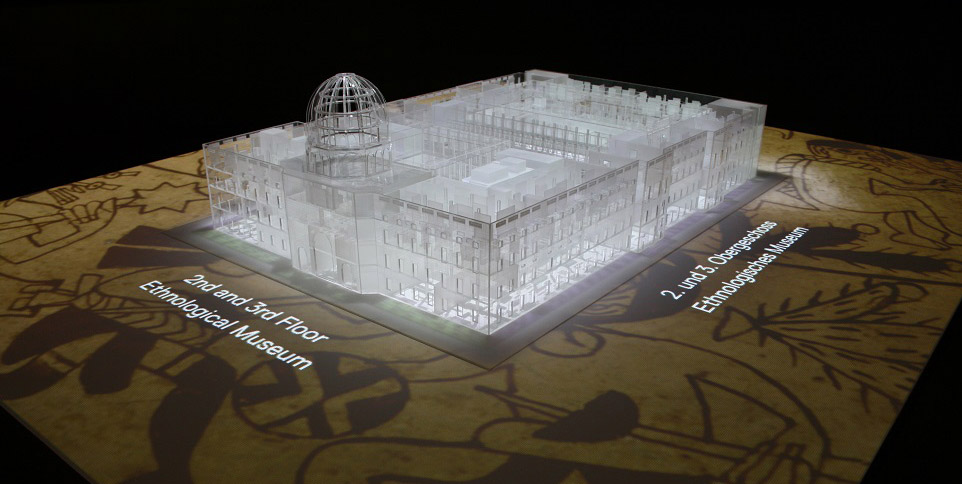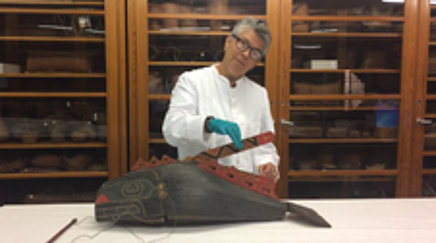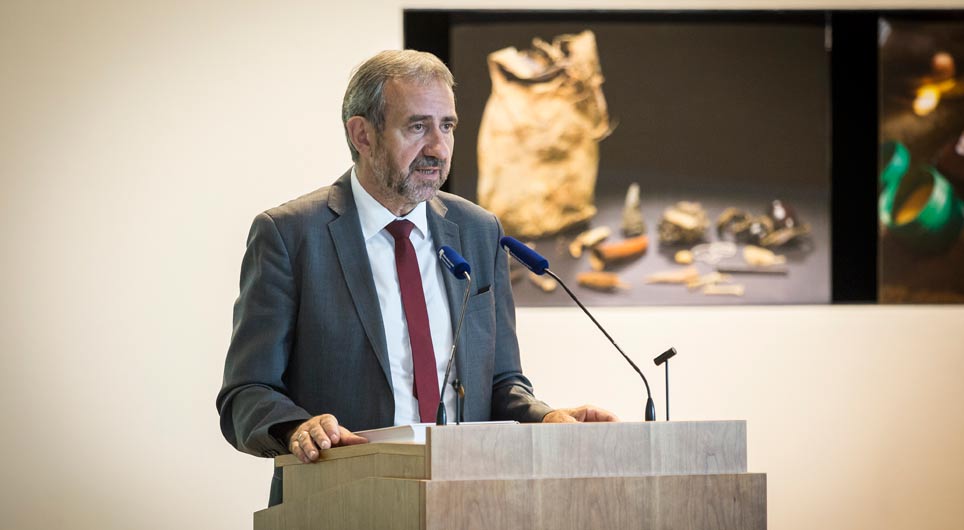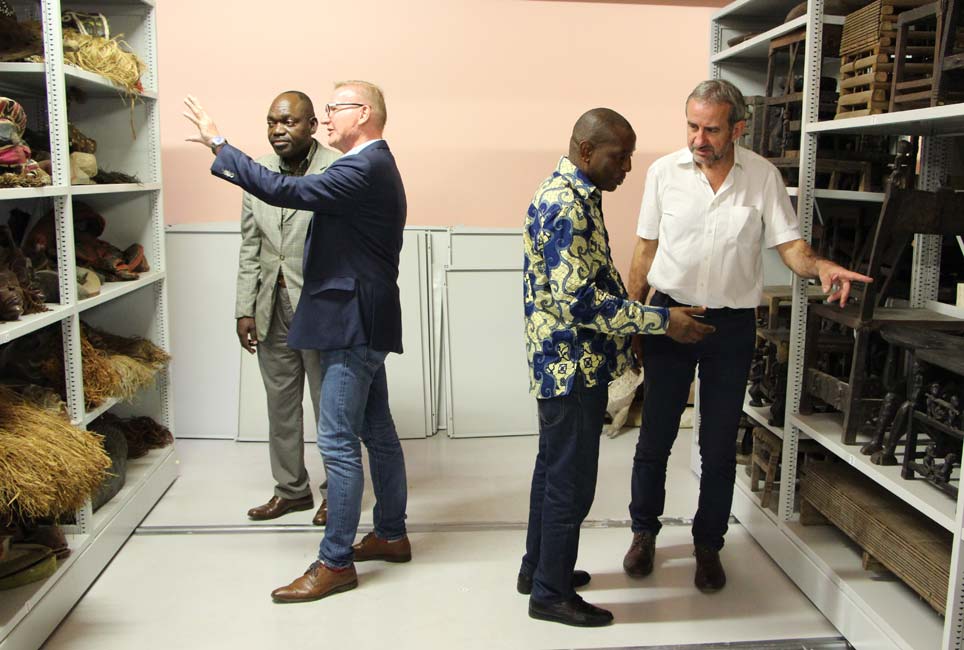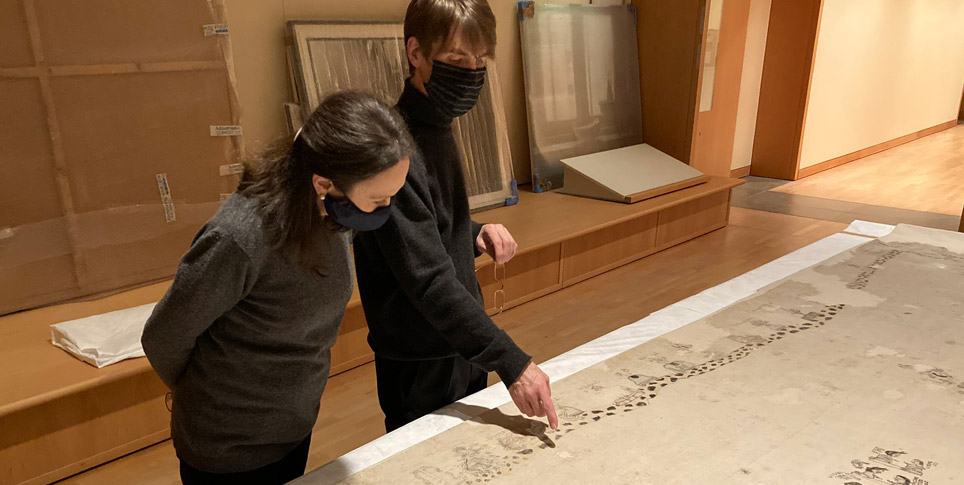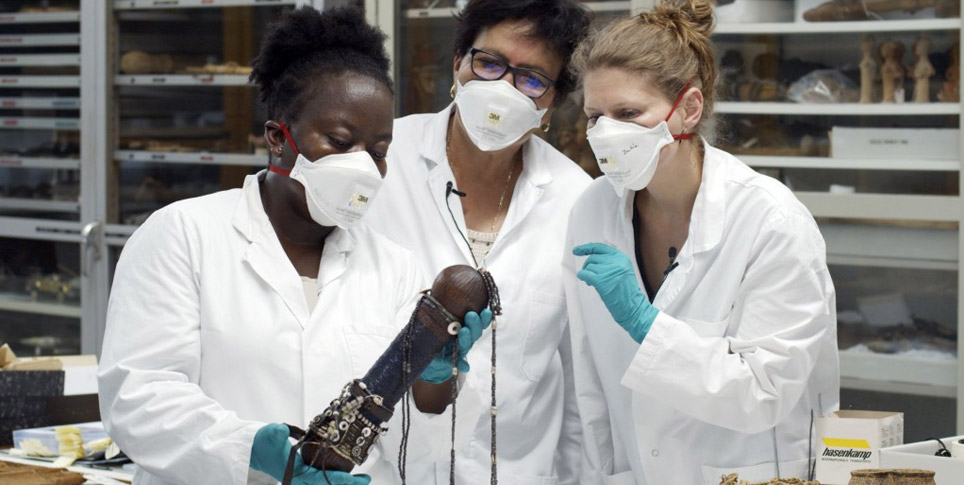The Berlin version of António Ole’s Township Wall installation was originally created in 2001 for the Gropius Bau exhibition The Short Century. It was shown later in Dahlem and again, most recently, in a special exhibition at Hamburger Bahnhof called Hello World. It has now found a new home in the Humboldt Forum. Eva Ritz, a conservator at the Ethnologisches Museum, was in charge of reassembling it.
What challenges did you face when moving the work to the Humboldt Forum and setting it up there?
Eva Ritz: In order to be able to show Township Wall in the Humboldt Forum at all, we had to shorten the work – a 14-meter-long installation consisting of over one hundred separate pieces – by two meters. When the exhibition was still in the planning stage, Paola Ivanov, the curator in charge, got in touch with António Ole, and he agreed both to shortening it and to displaying it temporarily here in the museum. Then, in 2018, a team of us started redesigning and conserving the installation, documenting everything in the process.
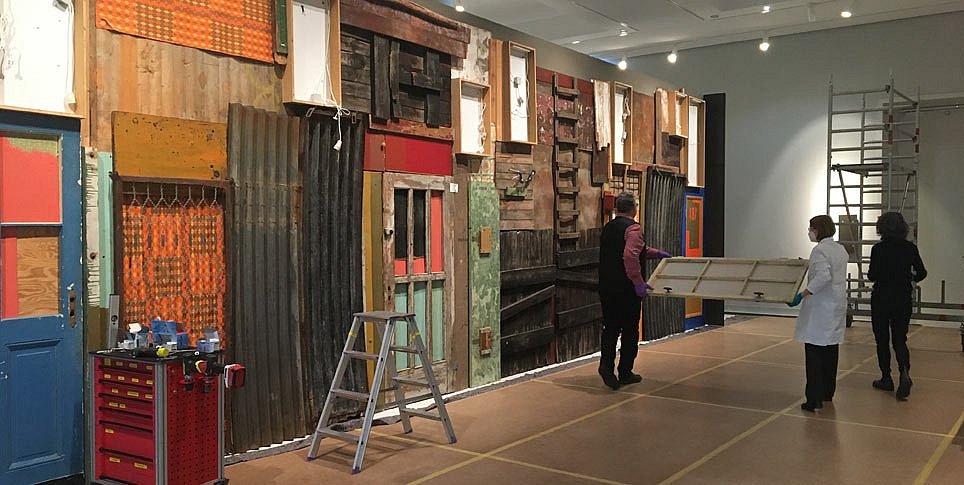
© SPK / Stefan Müchler
One of my greatest fears was that we wouldn't be able to put this giant puzzle, with all its overlapping pieces, back together again accurately. We were also anxious to preserve the many different surfaces and materials of the pieces, some of which were already quite damaged and fragile. At the same time, the impression conveyed by these shabby, worn-out, corroded surfaces and used parts is very much what António Ole is aiming for.
We were able to recruit Nicola Müller, a freelance colleague of ours and a specialist in contemporary art, for the conservation and documentation work. She and her team documented and measured Township Wall, sparing no detail and taking measurements both before and after it was shortened. They worked so precisely that, if necessary, we would even be able to reconstruct the longer Dahlem version of the work perfectly. António Ole was present throughout the dismantling and reassembly work, and he determined which pieces would be used and which would be left out. Of course, rather than simply cut off two meters, he created a condensed, reconstructed version of his previous work.
What was it like, working with this important contemporary artist?
Working with António Ole was an incredible experience for us personally at the Ethnologisches Museum, and he even donated the installation to the museum! We documented the entire dismantling and reassembly process on film, as well as holding a video interview with the artist. The finished documentary gives some personal insight into Ole and his extensive body of work, and it allows viewers interested in the museum to peek behind the scenes and see work areas that are not normally accessible to the public. The premiere will take place at the Humboldt Forum.
Also, whenever conservation questions came up – preserving surfaces or replacing certain technical components, for example – we were able to discuss them with António Ole straight away, because he was actually on site. For the conservators, this was an ideal situation.
What is it about Township Wall that makes it so special? How was it created?
António Ole has created multiple Township Walls in different cities all over the world. He’s always used local materials, things people think of as junk or garbage. The Berlin Township Wall was created for the exhibition The Short Century, curated by Okwui Enwezor and shown at Gropius Bau. Ole came to Berlin before it started and toured the city’s recycling centers, collecting material. This approach adds another dimension to the work: it shows a reflection of the city or, as Nadine Siegert likes to put it, the skin of the city. Here, for example, we have a series of classic pre-WWII Berlin windows, the kind many people will be familiar with from their own apartments. Margem da Zona Limite, the Portuguese name of an installation that incorporated the first Township Wall and was constructed for the Johannesburg Biennale in 1995, brings to mind a series of different associations. Roughly translatable as “On the Edge of the Boundary Zone,” it alludes both to the mysterious, heavily metaphysical “zone” in the film Stalker by Russian director Andrei Tarkovsky and to experiences of the civil war in Angola.
How do you like Township Wall’s new location in the Humboldt Forum?
After having seen the work in various different places, I’ve got to say that Township Wall is a strong presence here, in this space created especially for it, and that it deeply shapes the identity and feel of the room. Even the color of the wall in the background was chosen in consultation with António, and so we can present visitors with this impressive piece, one of his key works, in a way that is considerably more generous and open than was possible at the old location in Dahlem.




